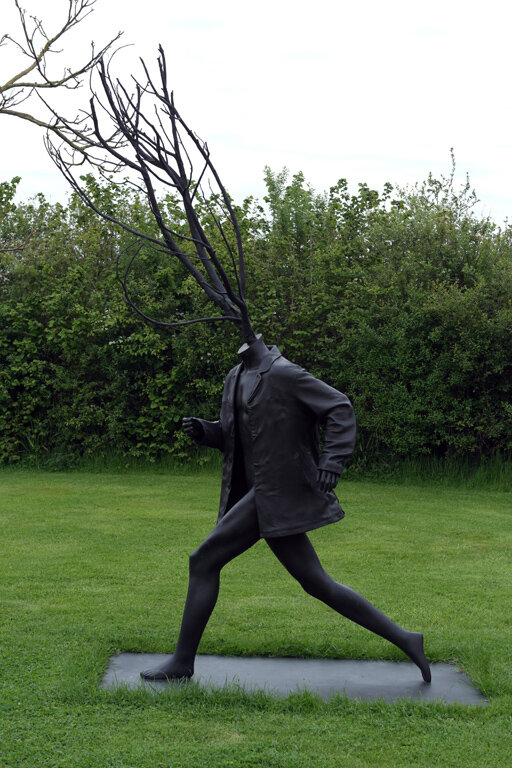As lockdown eased in early April and we all tentatively began to get back to our lives and loved ones, I was in need of some art therapy that wasn’t online or from the ton of art books that kept ‘turning up’ to the house.
I am more myself now from the darker, winter months. British summer time, more daylight hours, feeling not so hopeless. But as I approach the car at nearly 8am I am CBD’d up to the eyeballs to take the edge off the hour-long car journey for some visual culture. I had never been a good traveller before the pandemic – say a prayer before getting on a plane, Valium and the white-knuckle grip of the passenger seat as we ‘favourite lane’ (slow lane) it down the M5. But since we have been more confined to our homes over the last year, stayed local and travelled less if at all, I have been left with a bit of a trust issue with our car. Like a deer approaching a watering hole, sensing the danger but desperate for a sip, I slide into the front seat as we make our way to Durslade Farm in Bruton.
It’s a cool grey morning. Typically British, spitting. I enjoy the grey days the most. They feel quieter, more subdued than the grand expectations of our rare sunnier microclimate but they have the possibility to be greater, more creative and colourful.
Henry Taylor’s art brought a vast depth of feeling and colour to that grey day. Before seeing his vast solo exhibition at Hauser & Wirth, (which included works created as part of an artist residency in Somerset during the winter lockdown months) I had never heard of Henry Taylor.
Born in 1958, this American painter creates mostly bold colourful portraits (although doesn’t like to be referred to as a portrait artist) found object sculpture and large installations. Taylor has exhibited retrospectives at the MOMA and the Whitney, as well as winning the Robert De Niro Sr Prize for his achievements in painting. His fast, loose, bold painters style invites the viewer to connect with the sitter. Taylor has painted friends, family, acquaintances and strangers. Celebrities and homeless people. Each subject is given equal respect and presents on his canvas of expressive brush marks.
His work is personal, representing communities closet to him. He uses symbols of freedom and power alongside pop culture. Within the exhibition was some of Henry Taylors earlier works, miniature paintings created on cigarette and cereal packets and matchboxes. Created in the 1990s when he was still an art student, the miniature paintings are like little thoughts/moments and expressions of what was going on in Taylor’s life at the time. Playful logos and domestic scenes, these were some of the pieces that really struck me from the exhibition. As a painter but also because I have created a small series of works on vintage matchboxes, Henry Taylor’s small works were beautiful and packed a real punch of lived experience. There was one in particular I loved. A cerulean blue sky with a tiny blob of a helicopter just off centre. Strangely, as I left the exhibition and headed back to the car, I heard that familiar humming in the sky and as I looked up, I saw a helicopter flying low over Bruton. Although not in the same context as Taylor created his miniature, that experience made me feel connected to the work somehow, a small gesture of serendipity.
Amongst the paintings were a series of found object sculptures. Henry Taylor is a collector of things and he likes to bring these together to tell stories of his lived experience, voyage and a sense of place. My favourite was the horse. Two old worn-out saw horses, one mounting the other, endowed with a rusty hammer. A representational bust for added form finished off with a multitude of hair extensions. It was fun and it made us smile, the dare of art.
At the end of the galleries as you venture out to the beautiful gardens by international landscape designer Piet Oudolf, sits Henry Taylor’s first outdoor bronze. This sculpture was inspired by his older brother Randy who was the founding member of the Black Panther chapter in Ventura, California and his experience of racism. The lone black figure with a tree rising up from his shoulders, looks hurried as he strides out in his black jacket between the greenery.
This exhibition was sensational. The work was reflective, emotive combined with a sense of play and fun. I can’t believe I’d never encountered Henry Taylor before. After this exhibition I will be seeking out more of Taylors work. I left feeling motivated and inspired.
Endless possibilities on a grey but not so ordinary day.




